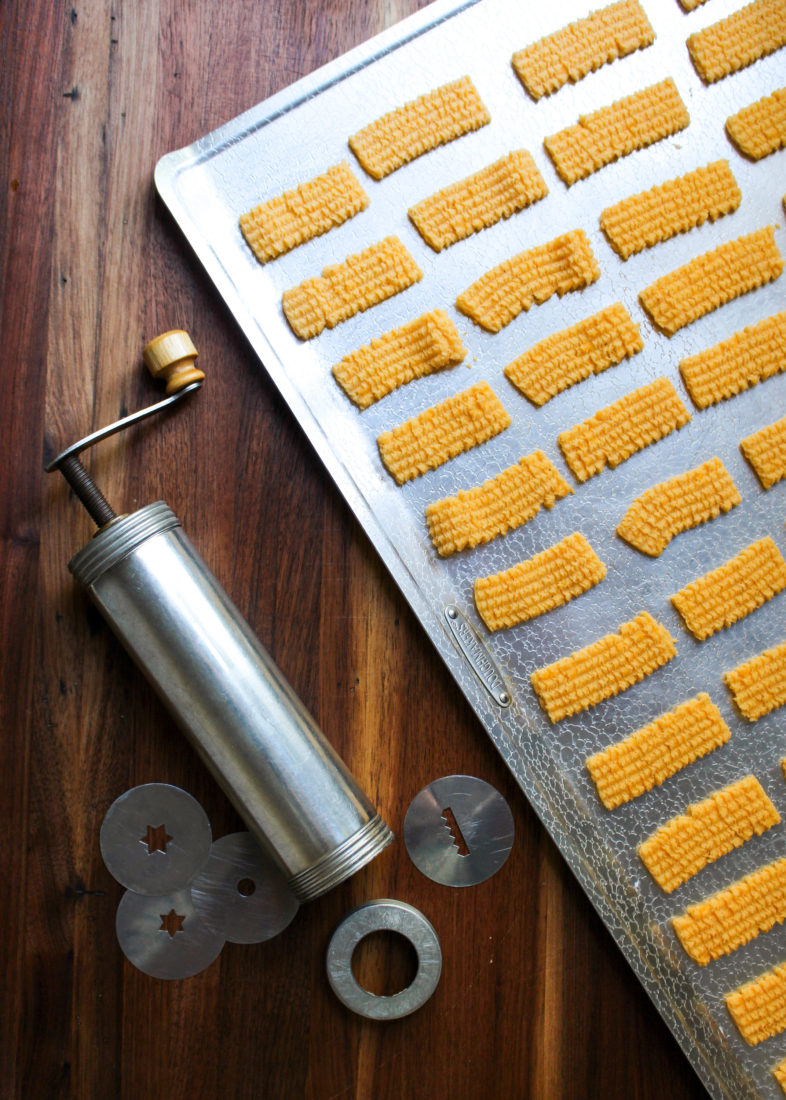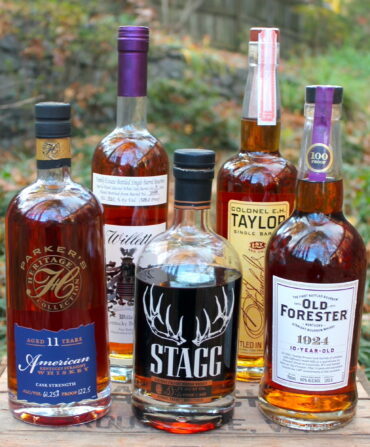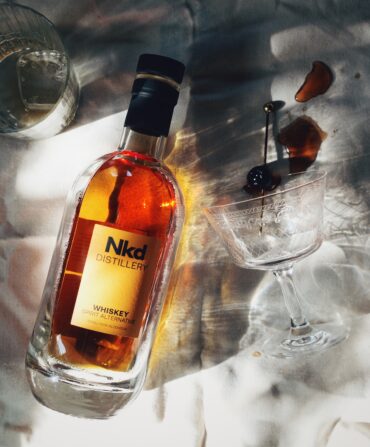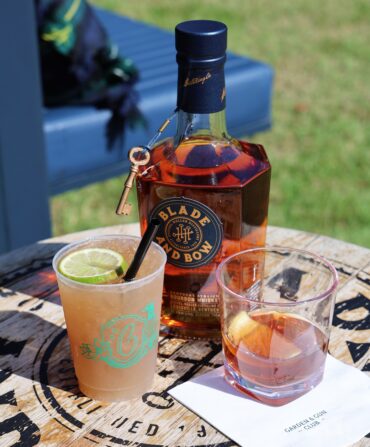Sometime around 2006 or 2007, tragedy befell Mountain Brook, Alabama, a leafy enclave just over Red Mountain from downtown Birmingham, though few noticed it at the time. That’s when Wesley Lassen, owner of The Cook Store in Mountain Brook Village, estimates that she sold her very last Swedish-made Sveico cookie press.
“It’s heartbreaking,” says Lassen, the third owner of the store, which has been in operation since 1975. “The company sold out, moved to China, and it was discontinued.”
While the fate of a kitchen-equipment factory in Sweden might seem like a distant concern, it’s a big deal to any home cook who loves classic Southern cheese straws. “That press was the best thing ever,” Lassen says. “I would not even lend mine out to anybody because if anything happened to it, I would just cry.”

Photo: Phillip Rhodes
A Sveico cookie press.
The Sveico was a slender stainless-steel cylinder with interchangeable discs and a wooden handle. At just shy of 2 inches in diameter, it fit the hand comfortably. And its crank-operation allowed for constant pressure that steadily extruded dough through sturdy screw-on attachments for the disc blades. Extrusion, as unpleasant as that word sounds, is the key to a properly made cheese straw. The dough—a combination of butter and grated Cheddar cheese, held together by the smallest possible amount of flour, seasoned with salt, and spiked with cayenne—can be tough. “You need a little strength,” Lassen says. Piping bags and most modern cookie presses have three strikes against them: First, nearly all of them are made of plastic, so they’re not as strong and durable as metal; Second, few are crank-powered, which provides more leverage to move the dough than plunger-style presses; Third, most are pump- or trigger-handled, which doesn’t result in the same steady, constant pressure as a crank.
Rolling and cutting the dough like pie dough doesn’t achieve the same effect as a cookie press; rolled cheese straws are flat on both sides, more like crackers. Slicing dough into rounds creates…cheese wafers, which are not cheese straws. The rectangle-shaped disc blade of a cookie press, on the other hand, produces straws that are flat on the bottom but ridged along the top, leaving delicate crevices that cradle salt as the straws bake.The star disc comes a close second, resulting in thin crisp-edged straws that are pretty but brittle.
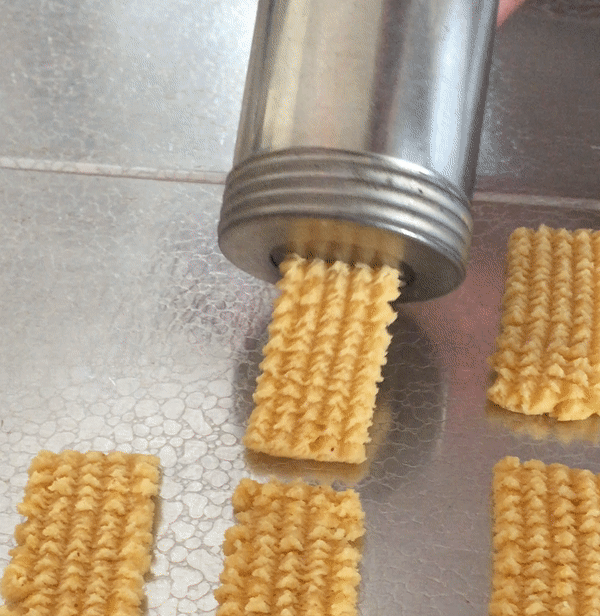
Photo: Phillip Rhodes
A Sveico cookie press at work.
Lassen prides herself on selling kitchen equipment that works—All Clad and Le Creuset cookware and Doughmakers bakeware, for instance. She tests most of it herself. While she continues to sell cookie presses, she’s frank with her customers about their performance.
“Harold Imports makes one—Fante is the line, they make pasta-makers and whatnot,” Lassen says. “I found theirs hard to use because of the hand-hold on it. It’s wider around, and has a slide-in blade instead of the screw-on discs. I ended up giving one to my minister, and he loves it. But I told him, ‘Now listen, this is gonna kill your hand.’”
So has the lack of equipment options hurt the South’s cheese straw tradition? “I think it has,” Lassen says. “People have gotten to where they buy them instead—that’s the main solution. I do sell that terrible trigger thing to people who insist they want to make cheese straws. I tell them—‘It’s horrible. Or I can get you one that hurts your hand. I’m sorry, but those are your options.’”
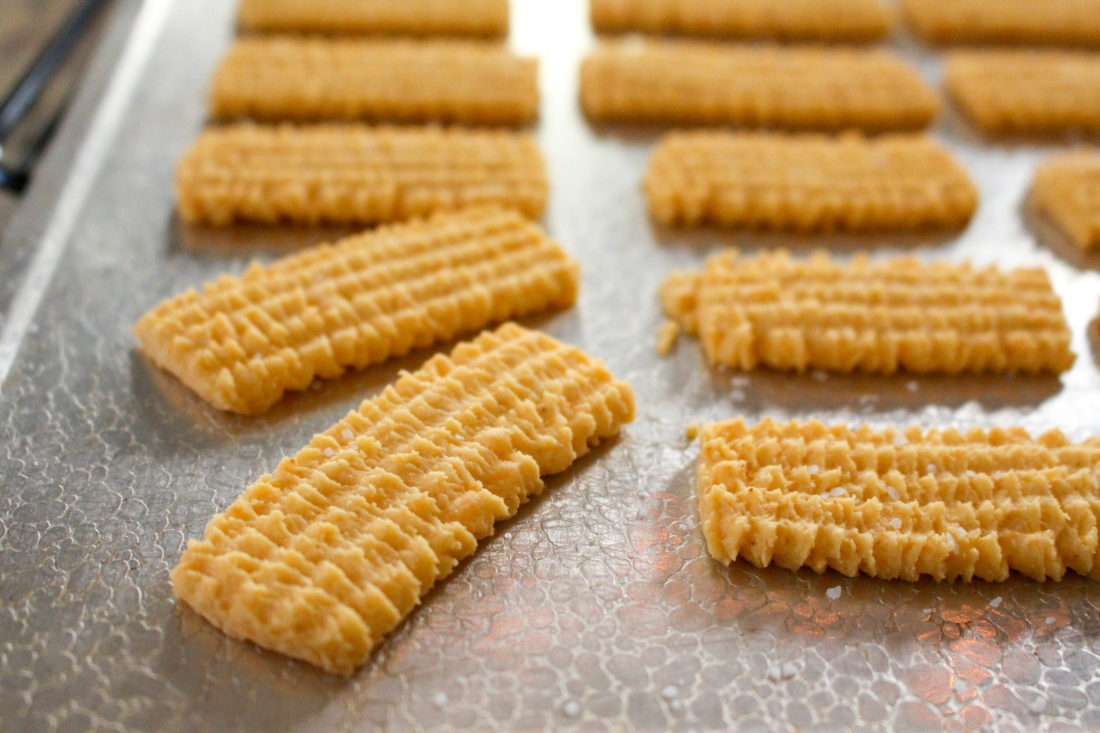
Photo: Phillip Rhodes
A fresh batch of cheese straws.
“If anybody could reproduce one, I’d love it,” Lassen says of the Sveico. “I’ve had people call me—we used to ship them all over the country.” Until then, if you spot a vintage Sveico at an antiques shop or an estate sale, buy it. Occasionally, vintage presses appear on sites like eBay and Etsy. For example, here are two sales for Sveico presses that recently closed. If you find one, bid whatever it takes.
Like a well-loved cast-iron skillet, a well-made cookie press is something you can hand down across generations. But unless an enterprising manufacturer finds a way to reproduce the Sveico, handed-down options are all we’ll have for making traditional cheese straws.


